Growing Watermelon in your home garden requires patience, sunshine, and routine maintenance. Watermelon is an annual fruit-bearing vine that requires a relatively long, warm growing season to develop a popular summer treat familiar to picnickers everywhere.
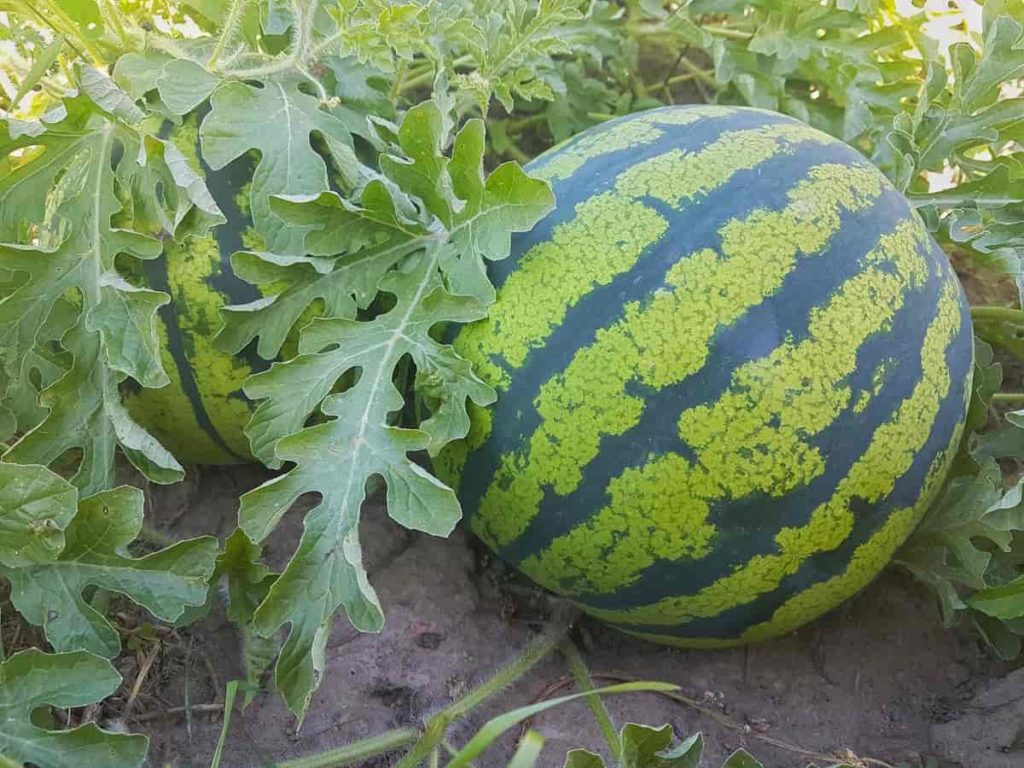
Watermelon is a member of the much larger Cucurbitaceae family of plants, a group that includes mostly fruiting vegetables, including Cucumbers, Squash, and Pumpkins. Watermelon is a broad, prostate-vining plant with a hairy, coarse texture with large, lobed leaves. They bloom with yellow flowers from mid to late summer. Delicious edible fruits with thick rinds grow and ripen quickly for harvest in late summer and early autumn.
How to grow Watermelon from seed to harvest
How long does it take Watermelons to grow from seed?
- Watermelon is relatively easy to grow from seeds. It takes a long season and grows best in hot weather, but you give some space to spread, and it is mostly maintenance-free.
- Watermelon seeds will take 4 to 12 days to germinate. Although it is easy to sow Watermelon seeds directly, you can also start Watermelon seedlings indoors 4 to 6 weeks before the last frost date.
- However, in cold climates, gardeners can still succeed in growing Watermelon by starting seeds indoors or buying young plants from nurseries and growing small weather varieties. Depending on the different types of Watermelon, it can take between 70 and 100 days to go from planting to harvest.
- It takes about three months to grow to full maturity. The first two months consist of the plant’s sprouting, vining, and flowering. Only in the last month of growth will the original fruit be ready.
How many Watermelons do you get from 1 seed?
- Unlike most crops, Watermelons grow on vines that grow from the initial sprout and can grow to six meters long. The number of vines determines how many Watermelons per plant because each vine can produce two to four melons during the growing season.
- A healthy Watermelon vine produces 2 to 4 fruits per plant. Vines produce both male and female flowers. Both need to set fruits, and there are fewer female flowers than males, about one female for every seven males.
In case you missed it: Watermelon Farming in Texas: How to Start, A Step-By-Step Growing Guide for Beginners
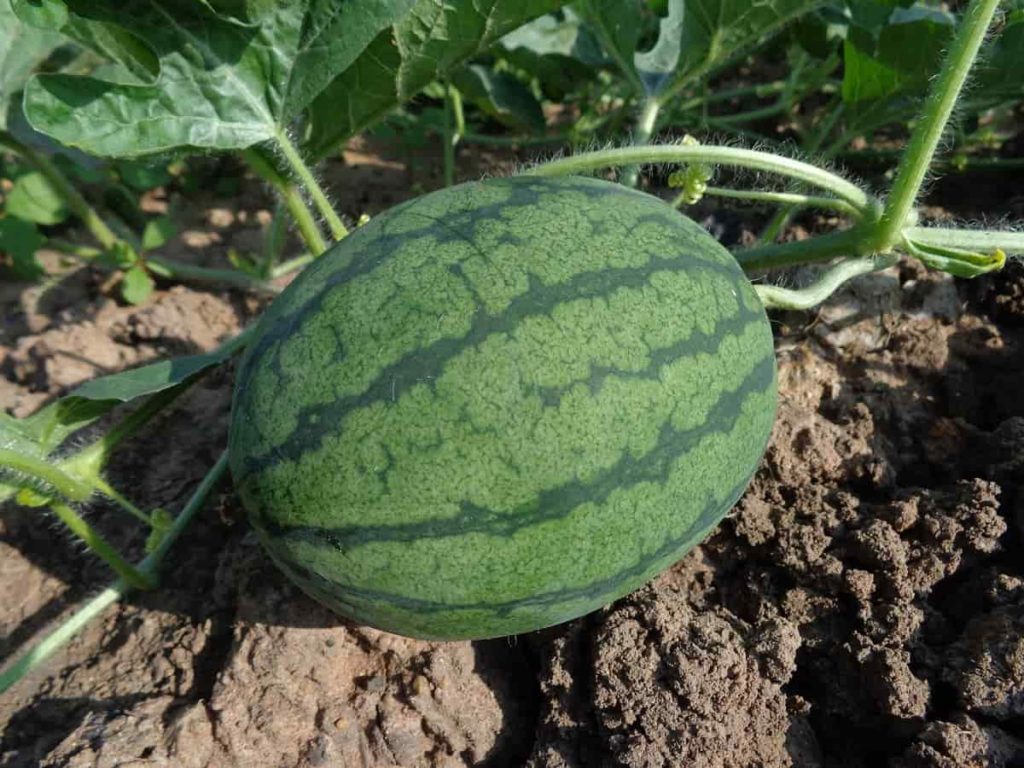
Can you grow Watermelon from seeds from a Watermelon?
- You’ll need at least three months of warm, sunny weather to grow Watermelon from seed to fruit. After that, you can save seeds from your Watermelon to grow more plants, but you’ll have to wait until next spring to plant them.
- Watermelon requires 80 to 90 days from seed sowing to grow into a full-sized Watermelon. However, some small-sized Watermelons can reach maturity in close to 70 days.
Can you plant seeds from store bought Watermelon?
- To grow seeds from a store-bought melon, the seeds must be harvested, cleaned, and stored properly. In addition, many grocery stores were picked before the melons were ripened, which could result in immature seeds that would not grow.
- Do not start the seeds first because the large Watermelon seedlings transplant poorly. Plant 3 seeds in a three or 4-inch peat pot or large cell pack, and thin for best planting. Sow Watermelon seeds 1/2 inch deep. Place under a sunny south-facing window or lights to germinate.
Do you water Watermelon every day?
- Watering is essential from planting to fruiting. While melon plants grow, bloom, and bear fruit, they require 1 to 2 inches of water per week. Keep the soil moist, but do not fill it with water.
- Watermelons don’t need water every day. Consider only watering your Watermelon daily when the temperature is above 32°C. Watering 1 to 2 times per week works well if the temperature is below 32°C. You should keep the soil moist to a depth of 12 inches.
- They need a lot more regularly, even water, to grow faster. So until the fruit reaches full size, you should keep the soil moist, then stop watering it while it is ripe.
- Stop watering the plants altogether about ten days before the melon is harvested. This will allow the sugar in the fruit and keep the flesh crispy. This makes the Watermelon taste much better.
What month do you plant Watermelon?
- You should plant Watermelon from late spring to early summer once the soil temperature reaches 22°C or above. Plant Watermelon in nutrient-rich, well-drained soil with a pH of 6.0 to 6.8 at a distance of 3 to 5 feet.
- Watermelon seeds grow easily and quickly, and seedlings usually don’t transplant well, so they don’t need to start in a pot or seed tray.
- Mid-June is the best time to plant them, now that the soil and air are hot. For immediate success, look for short-season varieties that mature faster, such as sugar babies.
Do Watermelon plants come back every year?
- As annual plants, Watermelon must be replanted in all seasons and will not survive as seedlings or fully grown plants in winter. Watermelon requires warm weather to grow fast and produce sweet, juicy fruits.
- You can obtain about 2 to 3 melons per plant at its single lifespan of 3 to 4 months. Gardeners usually deliberately keep only one Watermelon per plant to harvest large-sized fruits.
In case you missed it: Watermelon Farming in California: How to Start, A Step-By-Step Guide for Beginners
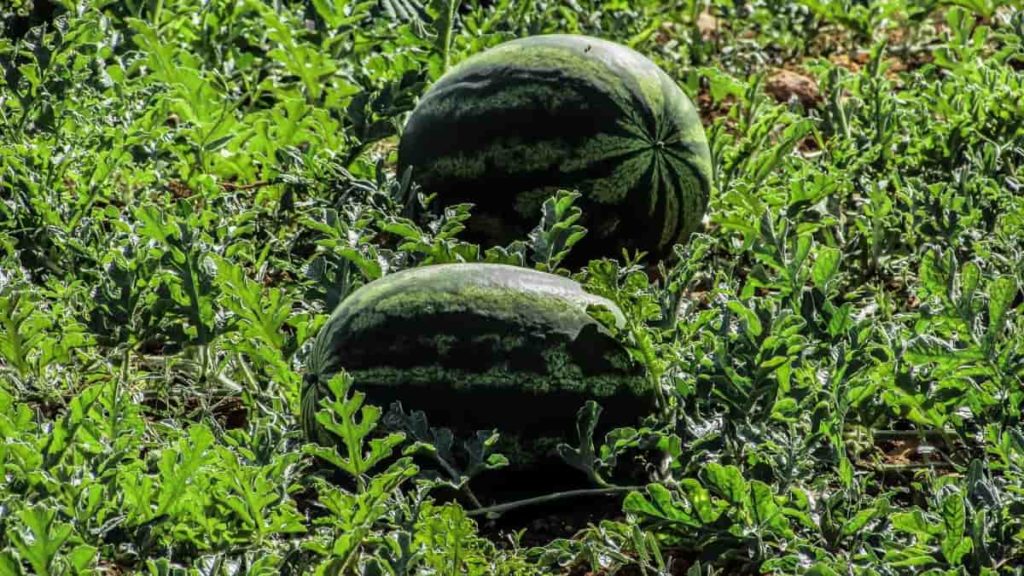
Can I grow Watermelon from the seeds inside?
- You can grow Watermelon in containers if you have a small garden. To do this, fill some pots with seed starting formula and sow each seed at a depth of 1 inch. Keep the soil moist and warm at 21°C to 22°C heat. The seedlings will emerge in 7 to 10 days. As soon as they emerge, place pots on sunny windows to provide enough light.
- Watermelon seeds can be started indoors about six weeks before the growing season. Plant seeds in peat pots and place them near sunny windows. Keep the soil moist, but avoid giving too much water; at this stage, the peat pots are very absorbent and will keep the soil moist for newly germinating seeds.
Should Watermelon vines be pruned?
- Pruning Watermelon promotes healthy vines and increases the size of fruits. Look for irregular or rotting fruits to prune from the plant. Removing less than the perfect melon will enable the plant to focus energy on growing large, healthy, juicier melons.
- Pruning properly will help lead all the plant’s energy towards fruit production, resulting in the fruit being low but high quality. Removing the lateral shoot to carry all the plant’s energy towards its main vine.
How do I grow a bigger Watermelon?
- If your area temperature is low, it can very likely cause small Watermelons. The culprit could be an aphid attack if you have small, misshapen fruit. Additional symptoms are small, cracked leaves and small vines.
- You should water the plants regularly in deep water sessions to maximize the size of the melon that keeps the soil moist. Side dress Watermelon plants with fertilizer prepared for edible crops or compost tea to feed the plants. Fertilizer encourages growth to produce large melons.
Do Watermelon plants need full sun?
- Watermelon requires full sunlight and fertile, well-drained, sandy soil with lots of organic fertilizer, which is a good source of irrigation. Drip irrigation systems are recommended if grown on a large scale. Since Watermelon fruits are large, the vine is not grown on a trellis.
- Watermelon needs full sunlight to grow best. Watermelon plants can tolerate some partial shade, especially in warm climates, but enough sun is necessary for sugar growth in melons. Excessively shady conditions will reduce the number and size of fruits.
- Irrespective of what variety you grow in your pots, place the containers in a place where they receive at least 8 hours of full sun daily. Watermelons won’t make flowers or fruits if they don’t get enough sun.
Do you have to dry Watermelon seeds before planting?
- If you’re ready for a challenge or curious and decide to use seeds from store-bought Watermelons, you’ll need to dry them before planting them.
- Many plant seeds benefit from pre-planting soaking to soften the outer seed coating and germinate faster. However, Watermelons are an exception to this rule. Soaking the seeds before planting increases the risk of various fungal diseases, such as anthracnose.
- Soak the seeds in a water dish with a drop of dish soap. This will remove any sugar left on the seeds. Wash the seeds, tap them dry, and spread them on a paper towel to dry them. Leave the seeds dry for about a week before storing them.
What’s the best fertilizer for Watermelon?
- When fertilizing Watermelon plants, use nitrogen-based fertilizer at the onset. Once the plant starts to flower, switch to feeding the Watermelon phosphorus and potassium-based fertilizer. Watermelon requires enough potassium and phosphorus for the best production of melon.
- Fertilize high amounts of phosphorus for Watermelon, such as 10-10-10, at 2 kg per 1,000 square feet. Make a trench 4 to 6 inches deep and 2 inches from the edge of the row on the planting bed.
- When planting Watermelon for the first time, use nitrogen-rich organic options, such as blood meal, cotton seed meal, fish emulsion, and seaweed. After vining, bone meal and rock phosphate provide a healthy dose of phosphorus needed for fruiting.
- Melons work best when treated with small amounts of fertilizer in two or three applications. Every two weeks, you can apply liquid fertilizer and granular fertilizer every 6 to 8 weeks during the growing season. Since slow-release fertilizer works for months, one application is usually enough.
In case you missed it: Top 20 Steps to Boost Watermelon Yield: How to Increase Fruit Size, Quality, and Production
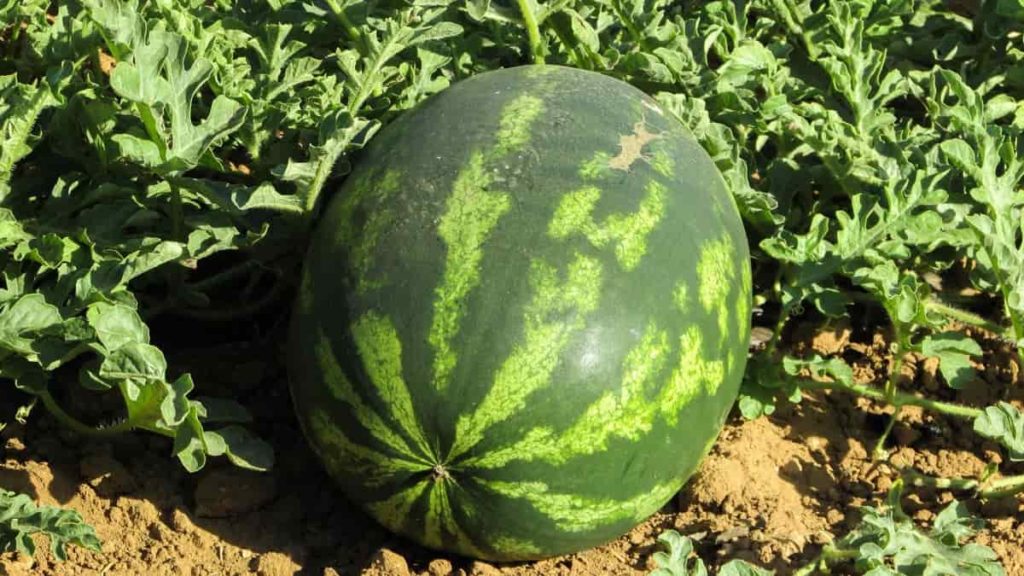
How do you know when a Watermelon is ready to harvest?
- Harvest Watermelon when the bottom or belly of the fruit changes from greenish white to buttery yellow or cream. This color variation is especially evident in dark-green skin types. In addition, the fruit loses its slick appearance above and fades when ripe.
- Ideal, perfectly ripened Watermelon should be dark green and dull looking. If it’s shiny, it’s not ripe yet. Another essential thing to do is to find a field spot. It will be a yellow splotch under the Watermelon.
- Some don’t continue to ripen once harvested, like Watermelons. So, the taste won’t get better, and they won’t get sweet.
Where is the best place to plant Watermelons?
- The seeds need warm soil to grow. The outer soil can be heated to the required 22°C by covering it with black plastic. Watermelons are usually planted in slightly mounded hills at a distance of 4 to 6 feet; these are large plants that need space to spread.
- Their vines need space to spread, so put them in a place where they don’t crowd other crops. Growing vines in raised rows, called hills, ensures good drainage and will hold the sun’s heat for longer. Plan to place the plants at a distance of 2 to 3 feet on a 5 feet wide hill.
How do you make Watermelon grow sweeter?
- To choose a Watermelon that has enough time to ripen and mature, you’ll want to inspect its stem, which should be dry and pale brown. The green stem can indicate that the Watermelon is not ripened yet and will lack flavor and sweetness.
- Before planting, you should add four to six inches of composted manure to the planting bed for maximum sweetness. Watermelon is at its sweetest when the vine wilt on the fruit or the fruit separates on its own.
- The best Watermelons are average size compared to others around them but should always feel heavy for their size. The oval-shaped Watermelon will be waterier, while the round-shaped Watermelon will be sweeter.
Why are my Watermelons not getting big?
- Watermelon’s stunted growth can result from damage during the transplant. You may have caused severe damage to the roots, and they may not take enough nutrients to support further growth. Cultivating around the plant can also damage the roots, affecting the fruit’s size.
- Planting Watermelon in the wrong soil can also slow their growth. They like sandy loams that are modified with organic matter and fine sand. Heavy soil is a disaster for growing Watermelon. Pollination also plays a role in the growth of Watermelon.
What helps Watermelon plants grow?
- Watermelon requires soil that is well drained and sandy. They also need a pH level between 6.0 and 6.5 which is a very narrow range. To find out if you need to add any nutrients and how much, check your soil and regularly water your Watermelon plants when they are young.
- Watermelon requires a large vegetative-free space in full sunshine and with well-drained soil that reaches at least 19°C for proper germination and growth. Because they are heavy feeders, modify the site with compost or well-decomposed manure before planting.
In case you missed it: Organic Watermelon Farming, Growing Practices
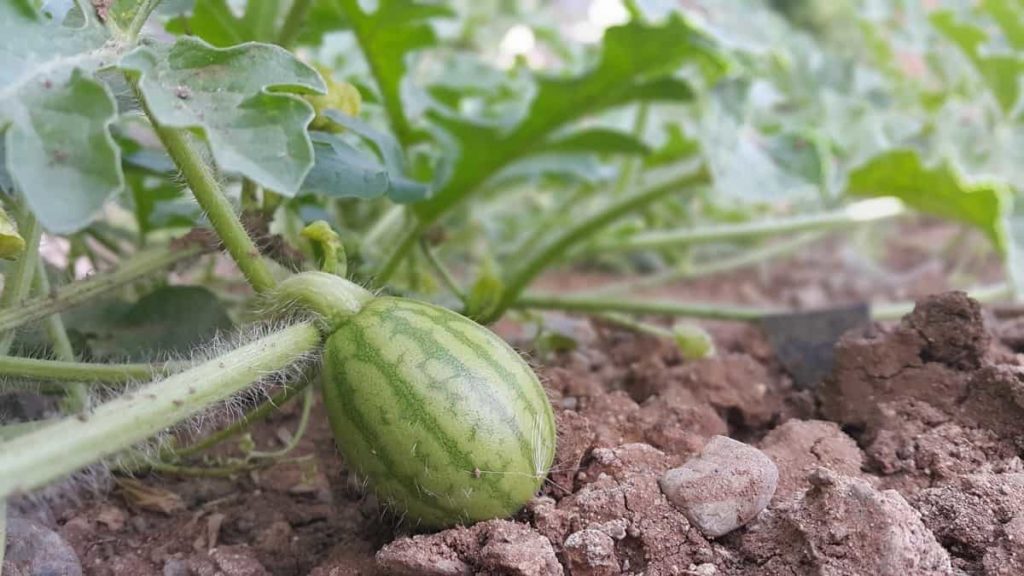
Is Epsom salt good for Watermelon plants?
For sweet Watermelons, when the plant starts vining and then when small 1-inch melons appear, spray 5 gallons of water with 6 1/2 tablespoons Epsom salt and 3 1/2 tablespoons of borax. Adding Epsom salt to the soil with enough magnesium can damage your plants by preventing calcium use.
What should I put under my Watermelons?
- To grow great Watermelon, you must put a barrier between the Watermelon and the ground. This is to reduce the risk of rot and disease. Suitable ground barriers are straw or even cardboard.
- Place plastic sheeting, thick straw, or small pieces of plywood directly under the melon fruits that are at least softball-sized. Unless the melon rests directly on wet soil or mulch, there’s much less chance for the melon’s underside to rot.
- Use cages, plastic mulch, stakes, straw mulch, or other materials to protect the fruit from the ground.
What happens if you pick a Watermelon too early?
- Unlike many fruits, Watermelons do not ripen after picking. That’s why knowing if a Watermelon is matured before choosing or buying is essential. Once it has been cut from the vine, it will hardly change until it goes bad.
- Once picked, the Watermelon fruits stop ripening, and the too early-picked fruits may be destined for a pile of compost instead of a dining table. So instead, you should allow your Watermelon time to reach full maturity in the garden.
How deep should Watermelon seeds be planted?
- Watermelon roots usually grow 8 to 10 inches deep; holes and mounds become reservoirs of moisture and nutrients. Plant the Watermelon in 12-inch-long hills of soil at least 6 feet apart. Sow 6 to 8 seeds per hill, then thin to 3 to 4 plants per hill. Sow Watermelon seeds 1/2 inch deep. Water seeds in the hills after planting.
- You should sow 2 to 3 seeds in each pot (this will ensure at least one grows), about ½ inch deep in the pot. Water the seeds gently (a mist or spray bottle is great), and keep the soil moist until it germinates.
What kind of soil do Watermelons like?
- Melons grow best on well-drained, sandy loam soil, with a pH between 6.0 and 6.5. If your soil has less than 6.0 pH will produce plants with yellow leaves that set some or no fruit. You can improve your soil by adding well-rotted manure or compost in spring or autumn.
- Watermelon produces a much stronger root system in dry conditions when the roots are forced to explore water deep in the soil. With continuous wet soil, roots lose the ability to grow deeper.
- Watermelons do best in loamy, somewhat sandy, and well-drained soil. However, they may struggle in soil with too much clay that is not well drained.
What can you not plant near Watermelon?
- You should not plant Watermelon with herbs, Lettuce, Marigold, Nasturtium, and Radish. Avoid planting Cucumbers, Squash, and Potatoes near Watermelon to help reduce the risk of pests.
- Avoid planting them near other crops that will shade them. Instead, to attract predatory insects, add flowers such as Dill, Chamomile, Cosmos, Pineapple, and Sage that feed on melon insects, including beetles, caterpillars, and aphids.
In case you missed it: Watermelon Profits, Yield Per Acre, Growth Stages
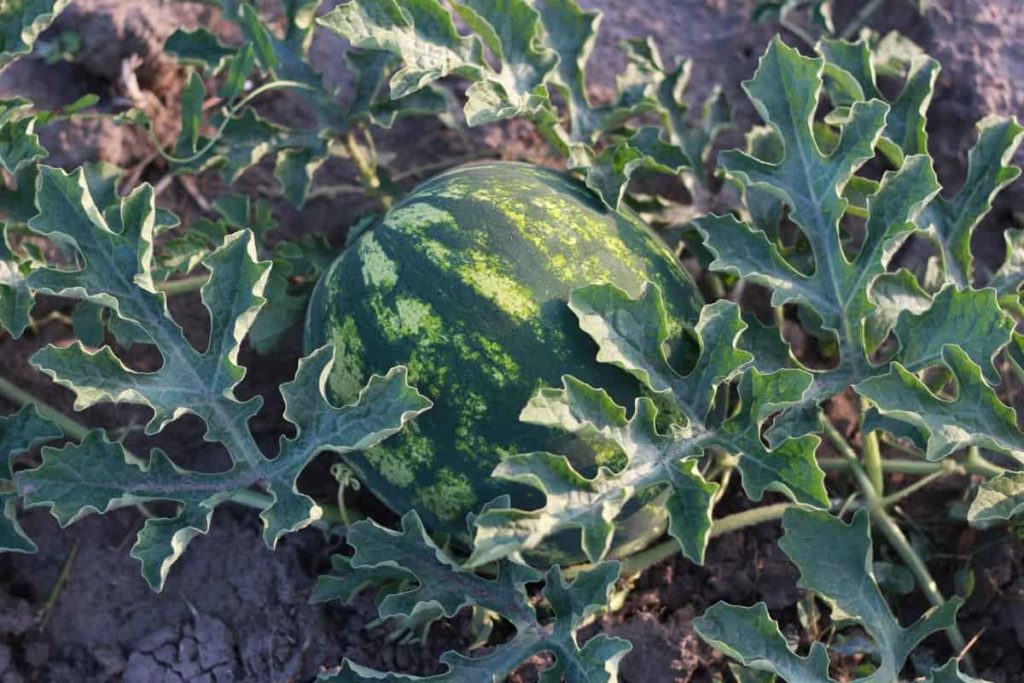
Why is my Watermelon not fruiting?
- If the activity of the flies is insufficient, not enough pollen will be delivered to fertilize the female flowers properly. This will result in either no fruit or malformed fruit. Flowers can be hand-pollinated in the absence of flies.
- If your Watermelon isn’t bearing fruit on early flowers, it may be due to a few reasons, such as insufficient fly activity to pollinate the flowers. In addition, bee activity may be reduced due to pesticide use, cold weather, or you may not have enough pollinator plants to bring in too many bees.
What happens if you plant Watermelons too close together?
- In the case of distance in Watermelon plants, those set too far apart valuable garden space, while those that are too close compete for light, air, and soil nutrients, resulting in a potentially compromised crop.
- You should not plant Watermelon vines close to each other due to space needs and concerns of shared pests and diseases, but you can plant them in a large bed in different areas with good cultural practices.
Why are my Watermelon plants growing so slow?
Watermelon requires hot growing temperatures for the best growth. The plant’s growth slows considerably if the outside air temperature falls below 21°C at night and less than 27°C during the day.
Conclusion
Grow Watermelon in the hottest, frost-free time of the year. Growing Watermelons in your garden are even better because they produce great spring or summer crops once the weather is hot. To succeed in growing Watermelons, you don’t have to be an expert gardener; provide them with their basic needs, and you will be able to grow this delicious warm-weather crop.
- How to Make Houseplants Bushy: Effective Tips and Ideas
- Innovative Strategies for Boosting Coconut Pollination and Yield
- Pollination Strategies for Maximum Pumpkin Yield
- The Complete Guide to Chicken Fattening: Strategies for Maximum Growth
- Natural Solutions for Tulip Problems: 100% Effective Remedies for Leaf and Bulb-Related Issues
- Revolutionizing Citrus Preservation: Towards a Healthier, Greener Future
- Natural Solutions for Peony Leaf and Flower Problems: 100% Effective Remedies
- Maximizing Profits with Avocado Contract Farming in India: A Comprehensive Guide
- Natural Solutions for Hydrangea Problems: 100% Effective Remedies for Leaf and Flowers
- The Ultimate Guide to Choosing the Perfect Foliage Friend: Bringing Life Indoors
- From Sunlight to Sustainability: 15 Ways to Use Solar Technology in Agriculture
- The Ultimate Guide to Dong Tao Chicken: Exploring from History to Raising
- The Eco-Friendly Makeover: How to Convert Your Unused Swimming Pool into a Fish Pond
- Mastering the Art of Delaware Chicken Farming: Essentials for Healthy Backyard Flocks
- 20 Best Homemade Fertilizers for Money Plant: DIY Recipes and Application Methods
- How to Craft a Comprehensive Free-Range Chicken Farming Business Plan
- Brighten Your Flock: Raising Easter Egger Chickens for Beauty and Bounty
- How to Optimize Your Poultry Egg Farm Business Plan with These Strategies
- Subsidy for Spirulina Cultivation: How Indian Government Schemes Encouraging Spirulina Farmers
- Ultimate Guide to Raising Dominique Chickens: Breeding, Feeding, Egg-Production, and Care
- Mastering the Art of Raising Jersey Giant Chickens: Care, Feeding, and More
- Ultimate Guide to Raising Legbar Chickens: Breeding, Farming Practices, Diet, Egg-Production
- How to Raise Welsummer Chickens: A Comprehensive Guide for Beginners
- How to Protect Indoor Plants in Winter: A Comprehensive Guide
- Ultimate Guide to Grow Bag Gardening: Tips, Tricks, and Planting Ideas for Urban Gardeners
- Guide to Lotus Cultivation: How to Propagate, Plant, Grow, Care, Cost, and Profit
- Agriculture Drone Subsidy Scheme: Government Kisan Subsidy, License, and How to Apply Online
- Ultimate Guide to Raising Araucana Chickens: Breed Profile, Farming Economics, Diet, and Care
- Bringing Hydroponics to Classroom: Importance, Benefits of Learning for School Students
- Ultimate Guide to Raising Polish Chickens: Breed Profile, Farming Economics, Diet, and Care
- Ultimate Guide to Raising Australorp Chickens: Profile, Farming Economics, Egg Production, Diet, and Care
- Silkie Chicken Farming: Raising Practices, Varieties, Egg Production, Diet, and Care
- Sussex Chicken Farming: Raising Practices, Varieties, Egg Production, Diet and Care
- Homemade Feed Formulations for Livestock: Discover Cost-effective Starter to Finisher Feed Recipes
- 20 Best Pig Weight Gain Supplements: Top Swine Weight Gain Formulas
- Ultimate Guide to Elderberry Farming: Propagation, Planting, Yield, Cost, and Profit